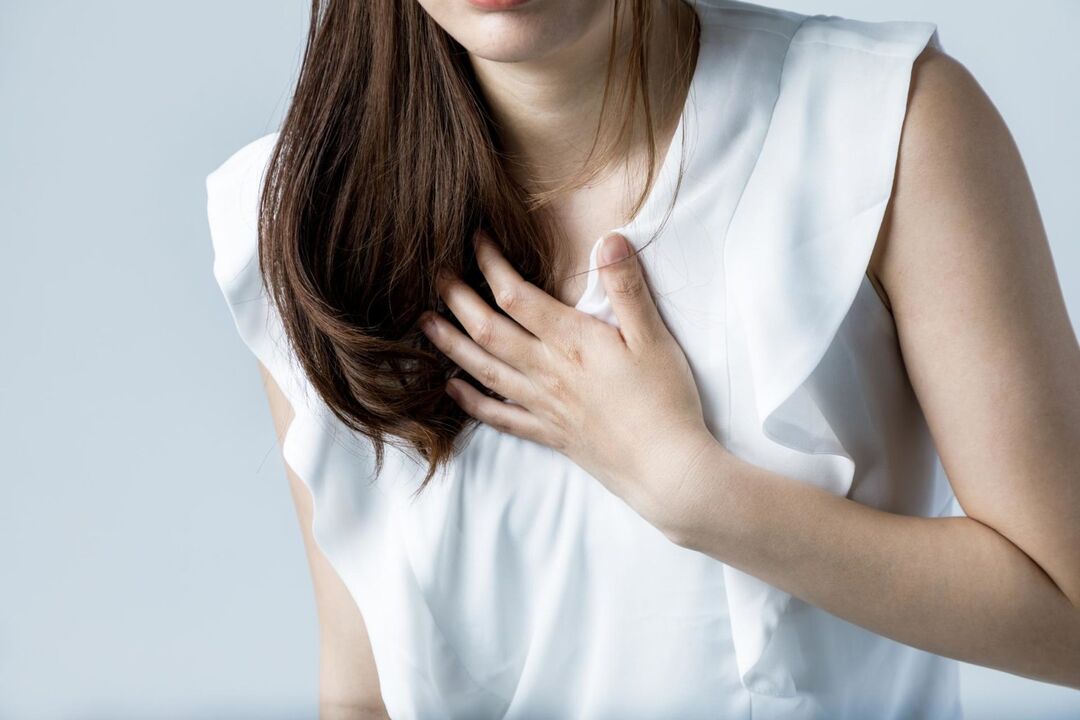Thoracic osteochondrosis is an unpleasant disease that has a long and often imperceptible development. The disease appears due to disruption of normal functioning and degenerative destruction of part of the vertebrae. Unlike the cervical and lumbar regions, the thoracic region is much less prone to osteochondrosis due to its low mobility.

Symptoms of thoracic osteochondrosis 1 degree.
Osteochondrosis of the first degree does not show pronounced characteristic symptoms, so a person decides to seek help from a doctor. Often the emerging disease is confused with other pathologies of the body: arrhythmia, pneumonia, gastritis. Due to inaction, the disease continues to develop, acquiring a more serious clinical picture.
The almost asymptomatic course of osteochondrosis of the first degree is explained by the peculiarities of the structure of the spine. But still, there are several symptoms that it is better to pay attention to when they appear:
- Sensation of pain in the chest area. It can be confused with intercostal neuralgia;
- Unpleasant recoil in the shoulder;
- Tingling in the area of the heart, kidneys or stomach;
- Absence of obvious symptoms of pain in the spine.
In stage 1, only a compaction and a decrease in the elasticity of the intervertebral cartilaginous tissue occurs. The column remains quite mobile. Due to the fact that the disease manifests itself mainly in other parts of the body, without manifesting pathology in the immediate place, it is difficult to make a diagnosis.
Symptoms of thoracic osteochondrosis of the second degree.
The transition of the disease to stage 2 means a decrease in the height of the intervertebral disc. As a result, the spine becomes less stable and the vertebrae gain unhealthy mobility. At this stage, patients feel severe pain, indicating problems with the spine.
Osteochondrosis of the thoracic region of the second degree, unlike the disease of the first degree, is accompanied by pathological changes that are difficult to return to a healthy state. Morphological symptoms of the disease are manifested in the form of rupture of capsules and formation of bumps. A frequent occurrence at this stage is the appearance of a crack in the annulus fibrosus. Thus, painful sensations are clearly felt directly in the affected area of the spine, due to which the diagnosis is greatly simplified. Clinically, such osteochondrosis looks like this:
- Recurring pain in the chest area;
- Punctures in the chest.
- When you stay in the same position for a long time, discomfort appears;
- When you try to put your hand behind your head, there are sharp pains;
- Decreased blood pressure;
- The appearance of scoliosis.
The occurrence of osteochondrosis of the second degree is caused by the absence or poor treatment of the disease of the first degree.
Symptoms of thoracic osteochondrosis 3 degrees.
If the treatment of osteochondrosis of the second degree was carried out poorly or untimely, the disease proceeds to the next, more dangerous stage 3.
Morphologically, partial or total destruction of the annulus fibrosus occurs in the spinal column of a sick person. The fixation and shock absorption capabilities of the vertebrae are sharply reduced, which leads to the formation of intervertebral bulges and hernias, followed by pinching of the nerves. The symptoms are permanent and severe, causing total discomfort:
- The appearance of sharp pains when coughing, taking a deep breath or just laughing;
- Constant aching pain in the area of the affected area of the back;
- intercostal neuralgia;
- Feel pain in the heart;
- Possible numbness and cramps of the extremities;
- Discomfort restrictions in the mobility of the hands;
- Signs of biliary dyskinesia and pancreatitis;
- Painful tingling in the solar plexus.
All of the above symptoms are for the most part a permanent obsessional character. After each dynamic or static load, there is a sharp increase in pain that persists even in the supine position. If this stage also begins, a change occurs in the bone marrow and disability appears.
Treatment of thoracic osteochondrosis 2, 3 degrees.
There is only a small fraction of a chance that the disease will go in the opposite direction. Basically, in the treatment of osteochondrosis, having a grade of 2 or 3, it occurs either by slowing down or stopping the degenerative development of the disease.
All proposed methods and methods of treatment are divided into pharmacological and non-pharmacological therapies.
- Doctor. The main direction of drugs prescribed by a doctor is pain relief, stimulation of tissue microcirculation and reduction of inflammation. Medications relieve uncomfortable symptoms and help improve the patient's well-being. Depending on the manifestation of the disease, a person suffering from osteochondrosis may be prescribed drug therapy that can:
- Relieve persistent pain. Non-steroidal anti-inflammatory drugs are prescribed;
- Keep fluids in the cavity of the intervertebral disc. It is recommended to use papain;
- Relieves spasms and pinching. Muscle relaxants and antispasmodics help;
- Restore a healthier state of cartilage tissue. Reception of chondroprotectors is shown.
- Without drugs. This type of therapy has a positive effect both alone and in combination with traditional treatment. In the world there are a huge number of ways to improve the condition of a person with osteochondrosis. The main ones are:
- Production of funds according to the recommendations of traditional medicine. The application is found in infusions and decoctions of celery root or sunflower root, various ointments.
- Acupuncture;
- Assistance in manual and post-isometric therapy;
- Physiotherapy;
- plastic massage;
- Correction of lifestyle and nutrition of the patient;
- Traction and fixation of the vertebrae.
In the case of grade 3 osteochondrosis, in addition to other methods, it is often necessary to resort to surgical intervention. Also, the listed drugs can be combined with hormonal drugs such as prednisone.
Osteochondrosis is a serious disease that requires attention. To prevent its development, it is recommended to carry out various preventive procedures, add physical education to life and follow the rules of a healthy diet.



















